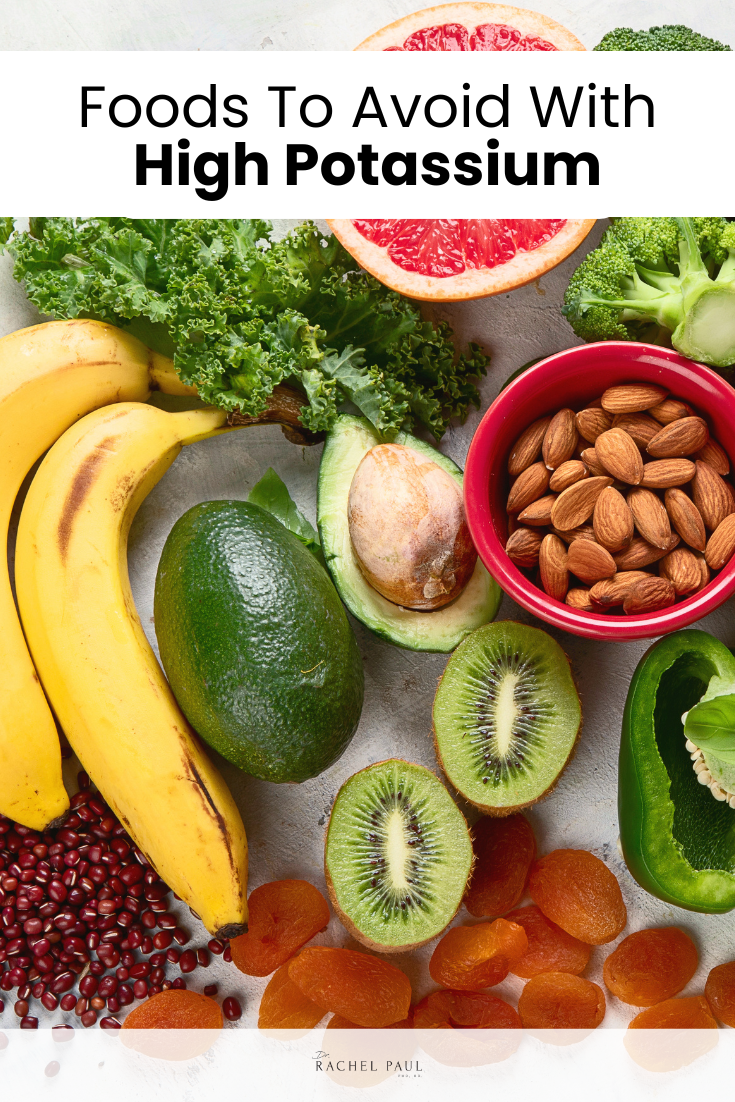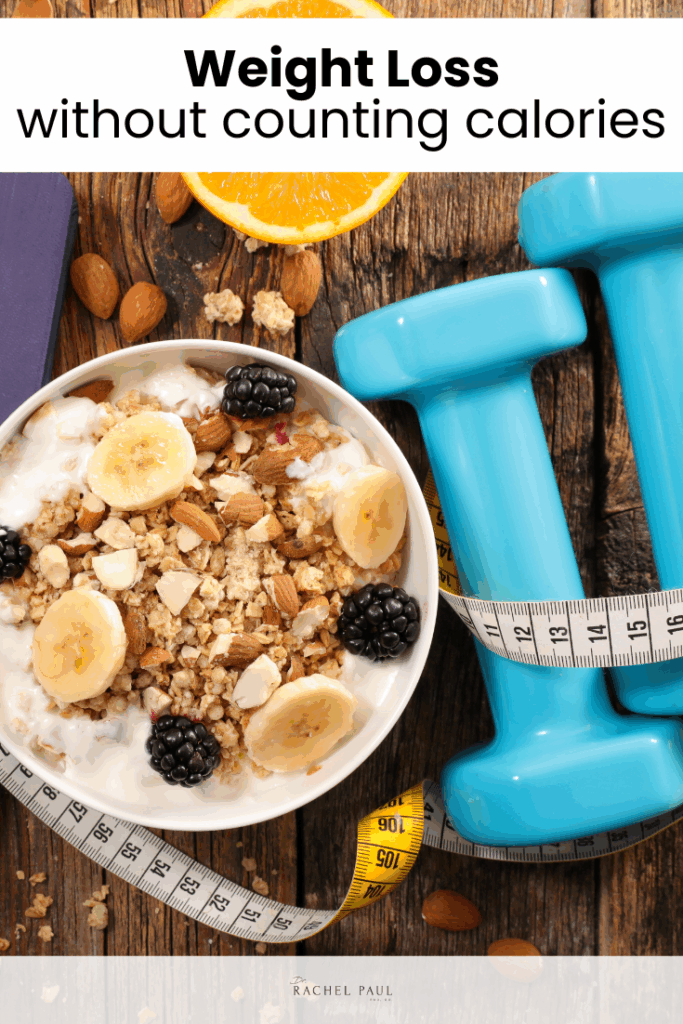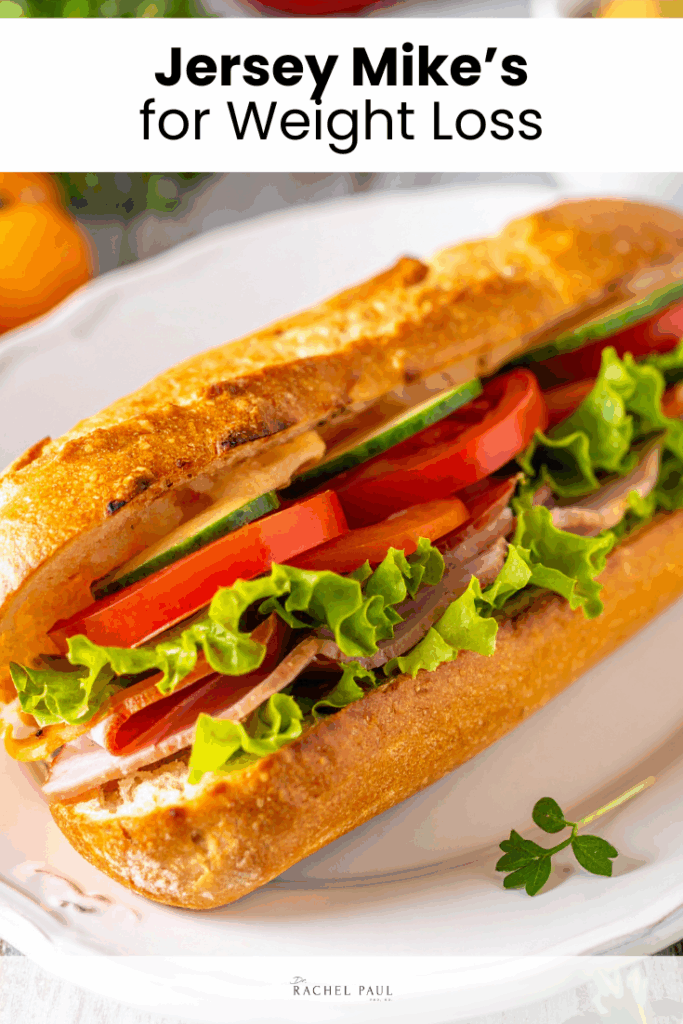In our health journeys, we all have to be mindful of our eating choices. Whether we have to consume more of something or less, everyone’s different. Everyone’s starting from different places or have different health goals or health concerns. While some people may need to increase their protein, fiber, and intake of certain vitamins, someone else may need to decrease consumption of foods that are high in potassium and watch their potassium intake.
There are a number of foods that many of us eat regularly that are considered higher in potassium than others. Today, I‘m sharing a round up of foods that are high in potassium you’ll want to avoid if you find out that the amount of potassium in your blood is too high and you’ll need to lower your levels.
17 Foods To Avoid With High Potassium
What Does High Potassium Levels Mean?
Did you know? The daily recommended amount of potassium for adults ranges from 2600 mg (female) to 3400 mg (male) per day. Potassium is a vital mineral that helps your body’s cells function properly, but too much potassium is not good. When there are high potassium levels in the blood, it is known as a condition called hyperkalemia.
Hyperkalemia is when the body has more potassium levels than it needs and can handle, which can lead to serious health problems. Too much potassium can disrupt nerve and muscle function, especially the heart. It can also contribute to kidney problems, muscle weakness, and high blood pressure.
According to the National Kidney Foundation, people with chronic kidney disease (ckd) and those with impaired kidneys may be at a higher risk for developing hyperkalemia. The kidney’s primary job is to filter the blood and remove excess from the body. If the kidney isn’t functioning properly, it’s unable to remove excess potassium from the body.
According to the Mayo Clinic, normal potassium levels typically range from 3.6 to 5.2 millimoles per liter (mmol/L). If there is a reading above 6.0 mmol/L, it is considered dangerous and may require immediate treatment.
Treatment for hyperkalemia can include medication and diet changes. This is why it’s important to consult with your doctor before increasing the amount of potassium in your diet. Knowing where you stand anyway is a good practice to have regularless. That way you can ensure your body is getting the nutrients it needs to function properly.
What Foods are High in Potassium?
To be clear, almost all foods contain some levels of potassium. Many plants contain potassium because it’s an essential nutrient that helps plants grow and function. However, in order for a food to be considered “high potassium”, it’s usually referring to an item that has more than 200 mg of potassium per serving.
So, if you’re wondering what foods are high in potassium, I can guarantee you this is a list of foods many of us already normally consume on a daily basis. However, don’t let this list deter you from continuing to eat healthy fruits and vegetables.
What’s most important is knowing where you stand numbers-wise by doing your due diligence with your primary care physician. And if after consulting with your doctor, it’s been determined that your potassium levels are high and you should avoid foods high in potassium in order to avoid excess potassium in your diet. Use this list as a reference point for knowing which foods that are high in potassium you should avoid.
Banana
Probably one of the most known items on the list for containing potassium are bananas. Bananas are considered a high potassium food because 1 medium sized banana contains about 422 mg of potassium.
Spinach
Spinach is another commonly eaten food on our list. What makes this item high in potassium is the fact that it comes out to about 839 mg of potassium in 1 cup. Many of us consume more than just a cup of spinach.
Sweet potatoes
Next on the list are sweet potatoes. This yummy food item and its cousin yams are high potassium foods. Sweet potatoes contain about 448 mg of potassium in 1 cup.
Potato
While we’re mentioning sweet potatoes, we have to also let you know about the regular potatoes too, which have even high amounts of potassium per serving —- 897 mg to be exact.
Avocado
Avocados are known as a super food for a reason. This beauty contains a lot of vitamins and minerals and has roughly about 708-760 mg of potassium in 1 medium sized fruit.
Beet root
While this may not be a super commonly eaten item on the list, it’s still important to know that beet root is another high potassium food with about 442 mg of potassium in 1 cup.
Oranges
Did you know? A single medium orange is also considered high potassium, containing roughly 237 mg of potassium.
Broccoli
Broccoli is another one of those super popular foods containing high amounts of potassium. So if you’re watching your potassium intake, remove broccoli from your diet since it has 230 mg of potassium in 1 cooked cup.
Tomato
Yes, tomatoes too. Tomatoes are high potassium foods with about 292 mg of potassium in 1 medium sized tomato and about 728 mg per cup of tomato sauce.
Salmon
Not all fish have high amounts of potassium. Salmon, tuna, halibut, and cod are fish with higher amounts of potassium. 3 oz of salmon contains about 400 mg of potassium.
Processed meats
Did you know? Processed meats like bacon, sausage, and lunch meat are also another form of protein that can be high in potassium. For example, 100g of ground pork has about 360 mg of potassium per serving.
Leafy greens
There are some leafy greens that are lower in potassium, but the following are ones you want to avoid if you’re trying to reduce your potassium intake. Swiss chard has 136 mg of potassium per serving, kale has 300 mg, and bok choy 250 mg of potassium per serving.
Lentils
Lentils have pretty high amounts of potassium content per serving. These have 731 mg in 1 cup, boiled.
Legumes
Legumes are another commonly eaten food that has high amounts of potassium. Green peas contain 354 mg in 1 cup, while peanut on the other hand has a whopping 1,029 mg of potassium in 1 cup!
Dairy products
While not all dairy products are considered high in potassium, yogurt and milk are two to watch out for. Yogurt can range from 260 to 435 mg per 6 oz, while milk can have between 350 and 420 mg of potassium per cup.
Dried apricot
Did you know? Dried fruits like dried apricot contain a whopping 1,511 mg of potassium in 1 cup. It’s actually one of the best sources of potassium. By removing the water, the nutrients inside this dried fruit become more concentrated as the fruit becomes smaller, which leads to a more concentrated amount of potassium per serving.
Prunes
The potassium content in prunes, another dried fruit, is also pretty high – coming out to about 635 milligrams in 1 serving (just ½ cup)!
All in all, if you have kidney problems or suspect hyperkalemia, you’ll want to keep a watch on your potassium intake in order to not contribute to high potassium levels. Be sure to read the nutrition facts on every label, and if you need to learn how to count calories for homemade food, we’ve got you covered.
Hopefully, this list of potassium foods to avoid provides you with the information you need to continue in improving your health in a better direction.


